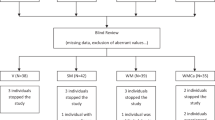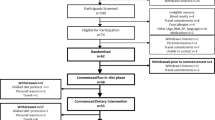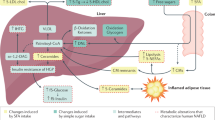Abstract
Objective: To compare two low fat diets one rich in walnuts on parameters of lipid metabolism in a group of hyperlipidaemic subjects.
Design: A randomised cross over study.
Setting: Department of Human Nutrition, University of Otago, Dunedin, New Zealand
Subjects: Twenty one men with mean (s.d) levels of total and LDL cholesterol of 6.58 (0.60) and 4.63 (0.58) respectively.
Interventions: For two periods of four weeks subjects were asked to consume two low fat diets (fat 30% total energy), one containing, on average, 78 g/d walnuts. Walnuts obtained through Lincoln University and the Walnut Growers Group (South Canterbury).
Results: Participants reported a higher total fat intake on the walnut diet (38% compared with 30% on the low fat diet P<0.01) The most consistent change in fatty acid profile of triacylglycerol, phospholipid and cholesterol ester on the walnut diet was a significant (P<0.01) increase in linoleic acid. Triacylglycerol linolenate also increased significantly (P<0.01). Total and LDL cholesterol were lower on both experimental diets than at baseline, 0.25 mmol/l and 0.36 mmol/l respectively on the walnut diet and 0.13 mmol/l and 0.20 mmol/l respectively on the low fat diet. High density lipoprotein cholesterol was higher on both the walnut and low fat diets when compared to baseline (0.15 mmol/l and 0.12 mmol/l, respectively). When comparing the walnut and low fat diets only apo B was significantly lower (P<0.05) on the walnut diet.
Conclusions: Despite an unintended increase in the total fat intake on the walnut diet, fatty acid profile of the major lipid fractions showed changes which might be expected to reduce risk of cardiovascular disease. The reduction of apolipoprotein B suggests a reduction in lipoprotein mediated risk, the relatively low myristic acid content of both diets perhaps explaining the absence of more extensive differences in lipoprotein levels on the two diets.
Sponsorship: Nutrition Department University of Otago, New Zealand.
This is a preview of subscription content, access via your institution
Access options
Subscribe to this journal
Receive 12 print issues and online access
$259.00 per year
only $21.58 per issue
Buy this article
- Purchase on Springer Link
- Instant access to full article PDF
Prices may be subject to local taxes which are calculated during checkout
Similar content being viewed by others
Author information
Authors and Affiliations
Rights and permissions
About this article
Cite this article
Chisholm, A., Mann, J., Skeaff, M. et al. A diet rich in walnuts favourably influences plasma fatty acid profile in moderately hyperlipidaemic subjects. Eur J Clin Nutr 52, 12–16 (1998). https://doi.org/10.1038/sj.ejcn.1600507
Received:
Revised:
Accepted:
Published:
Issue Date:
DOI: https://doi.org/10.1038/sj.ejcn.1600507
Keywords
This article is cited by
-
Healthcare Cost Implications of Utilizing a Dietary Intervention to Lower LDL Cholesterol: Proof of Concept Actuarial Analysis and Recommendations
Current Cardiology Reports (2020)
-
Effects of supplementing n-3 fatty acid enriched eggs and walnuts on cardiovascular disease risk markers in healthy free-living lacto-ovo-vegetarians: a randomized, crossover, free-living intervention study
Nutrition Journal (2014)
-
Effect of moderate walnut consumption on lipid profile, arterial stiffness and platelet activation in humans
European Journal of Clinical Nutrition (2011)
-
Protective Effects of Walnut Extract Against Amyloid Beta Peptide-Induced Cell Death and Oxidative Stress in PC12 Cells
Neurochemical Research (2011)
-
The effect of walnut intake on factors related to prostate and vascular health in older men
Nutrition Journal (2008)



